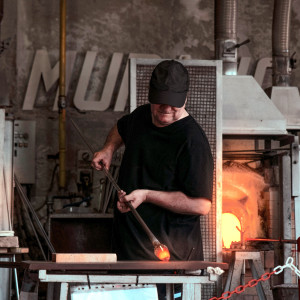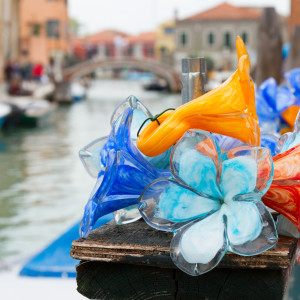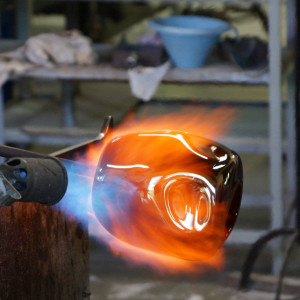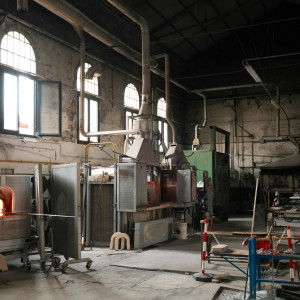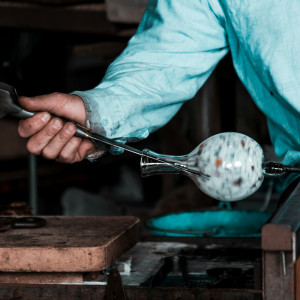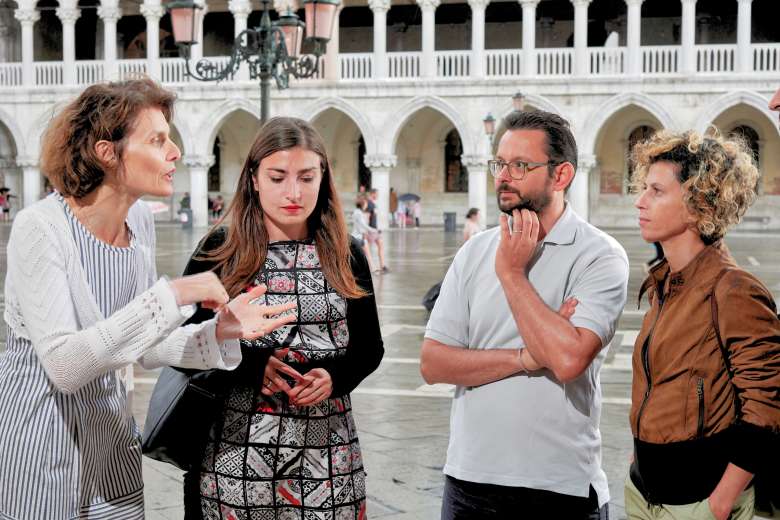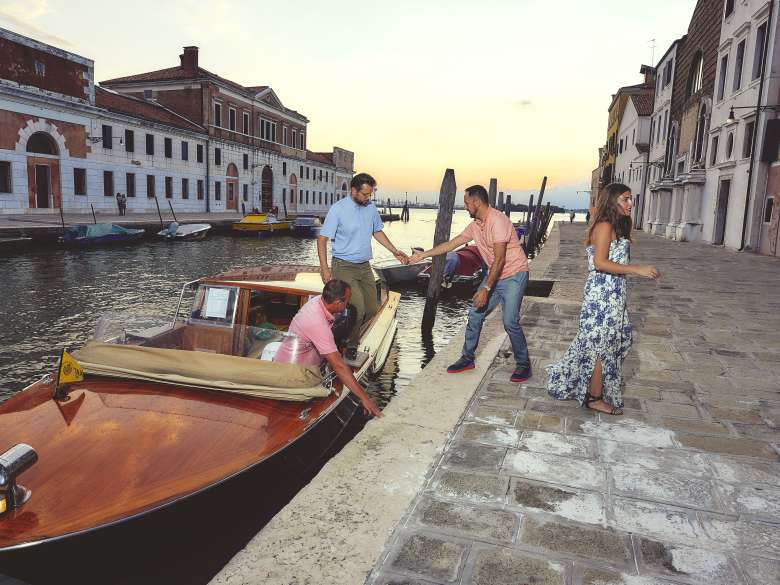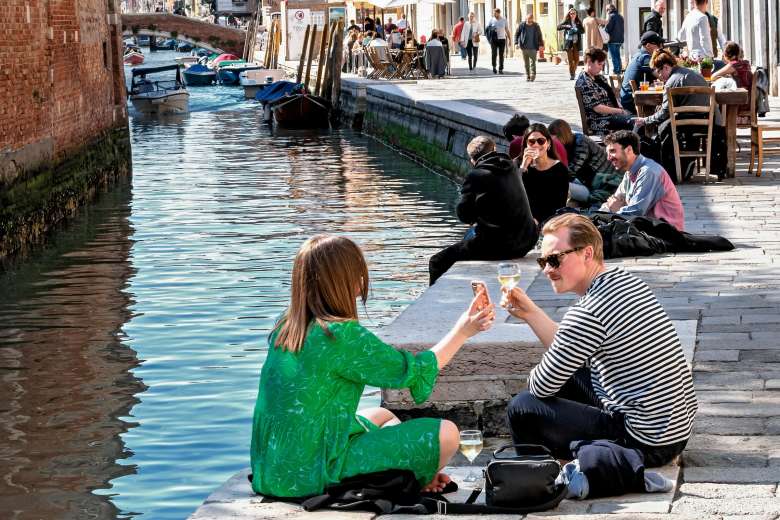Tour Details
Duration
3 hours
Product Type
Tour
Venues
- Murano Glass Museum
- Island of Murano
Photos & Highlights
- Discover the fascinating history of glass in Venice and gain a deeper understanding of the wider context of global trade, and how artisan crafts like Murano glass are forging a new path in our modern world.
- You'll witness actual glassmaking up close in a sustainable and authentic environment, away from the tourist crowds. Don't miss out on this incredible opportunity to be part of the legacy of Venetian glassmaking!
Select a date
Tour Description
Venetians have been making glass since the Middle Ages, and the importance of glass objects, glass trading, and glass craftsmanship is so deeply interwoven with Venetian history and identity that it’s impossible to visit Venice without considering it. During this half-day walking tour, we’ll visit the Venetian island of Murano, home to the city’s glass factories and artisans in the company of a historian. We’ll see glassmakers at work in local factories, learn how the craft has evolved, and discover what makes Murano glass so unique.
Murano Glass Tour
Venetians didn’t invent glass. The first traces of glass manufacturing can be traced back to Egypt and Mesopotamia, millennia before the common era. However, glass became one of the symbols of the republic and, in particular, of a tiny island in the northern lagoon, Murano. This craft was so important to Venice - both to its economy and status - that Venice established a system of patents to protect the inventions that were being forged by the skillful artisans. With time, glass masters were considered part of the local nobility and were granted special privileges. During this two and a half hour Murano glass tour, we’ll explore how the glass industry became such a crucial sector of the Venetian trade throughout the centuries and not solely within the Mediterranean sea.
We’ll begin with a trip across the Venetian lagoon by private boat to the island of Murano, where the city’s glass factories have been located since 1291, when the Doge forced all glass factories to relocate out of Venice proper in order to minimize fire hazards. Along the was, your expert will provide a vivid background on glass and how glassmaking first came to Venice.
Once we arrive in Murano, we’ll head straight to the Murano Glass Museum, which contains a fantastic collection of historic glass objects and allows us to trace the development of glass in Venice over the centuries. We’ll consider, for example, how the relocation of glass creation to Murano fueled a production boom and rapid innovation like the creation of transparent glass, unknown until that moment, to such extravagant concoctions as the white milk-like “lattimo” glass. As we make our way through the museum, our expert guide will also get into some of the details of the art, craft, chemistry, and trade that shape the story of glass, Murano, and Venice more broadly.
Glass Production and Trade
We’ll then take a stroll through Murano, whose landscape is characterized by a variety of glass factories, workshops, and boutiques. When possible, we will enjoy a demonstration provided by a local glassmaker. Our guide will enrich the presentation with more notes on the history of glass. For instance, our guide may explain how "perle" or small glass beads which come in different varieties, colors, and shapes, were widely used across the Mediterranean as token money. As the glassmakers work away, we’ll talk about how glass production spread worldwide, and how Murano glass entered a period of crisis in the nineteenth century. If you’re interested in exploring Venice’s role in global trade, we suggest our Introduction to Venice Tour: St. Mark's to Rialto tour.
Take Aways
At the end of our time together, we’ll be transported back to mainland Venice by private boat transfer with a better idea of what makes Murano glass unique. We’ll understand the history of glass in Venice and will have witnessed actual glass making up close and in a non-touristy, sustainable environment. And we’ll consider the wider context of global trade and how artisan crafts like this are carving a new path for themselves in our modern world.
Experts
Our hotel is offering us a private water taxi transfer to Murano for our tour. Can we get to Murano that way?
No, unfortunately, the "free" water taxi service offered by many hotels obligates hotel guests to visit only certain parts of the island and certain glassmaking factories. We prefer to have a choice of artisans to visit so discourage the use of the hotel water taxi service.
No, unfortunately, the "free" water taxi service offered by many hotels obligates hotel guests to visit only certain parts of the island and certain glassmaking factories. We prefer to have a choice of artisans to visit so discourage the use of the hotel water taxi service.
When is the best time to see a glassblowing demonstration on this tour?
Weekdays are the best time to witness live glassblowing demonstrations in Murano. Most glass furnaces operate Monday through Friday, when artisans are actively working. While some studios may be open on weekends, live demonstrations are not always guaranteed outside of regular working hours. To ensure the full experience—including seeing master glassmakers in action—we strongly recommend booking your tour on a weekday.
Where You'll Start
–
83 Reviews
Reviews can only be left by Context customers after they have completed a tour. For more information about our reviews, please see our FAQ.
Andrea was a great guide. As a native of Murano, he was in the unique position to share the history of Murano glass making and an intimate family and friend connection with the industyr. He knew the best places to purchase the genuine, artisan-made works.
Jeanne
Reviewed on:
Nov 3, 2025
Erika made it possible for us to see an artisan make a glass plate in a furnace at a factory, and to see a different artisan make glass art using a blowtorch. We had a whole tour of the factory and the production process. We had been to Murano before, but seeing it with a guide like Erika was much more informative and fun. We recommend her highly.
Randall
Reviewed on:
Oct 12, 2025
Matteo was terrific! Very knowledgeable, personable and was quick to understand our interest so it was indeed a personal tour. Would highly recommend him for tours
Vicki
Reviewed on:
Oct 11, 2025
